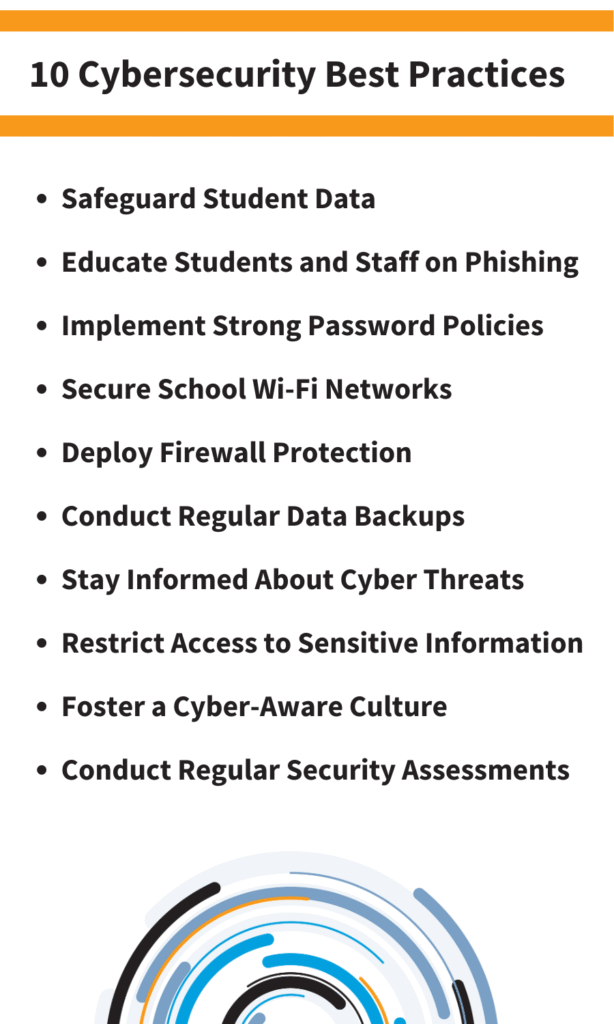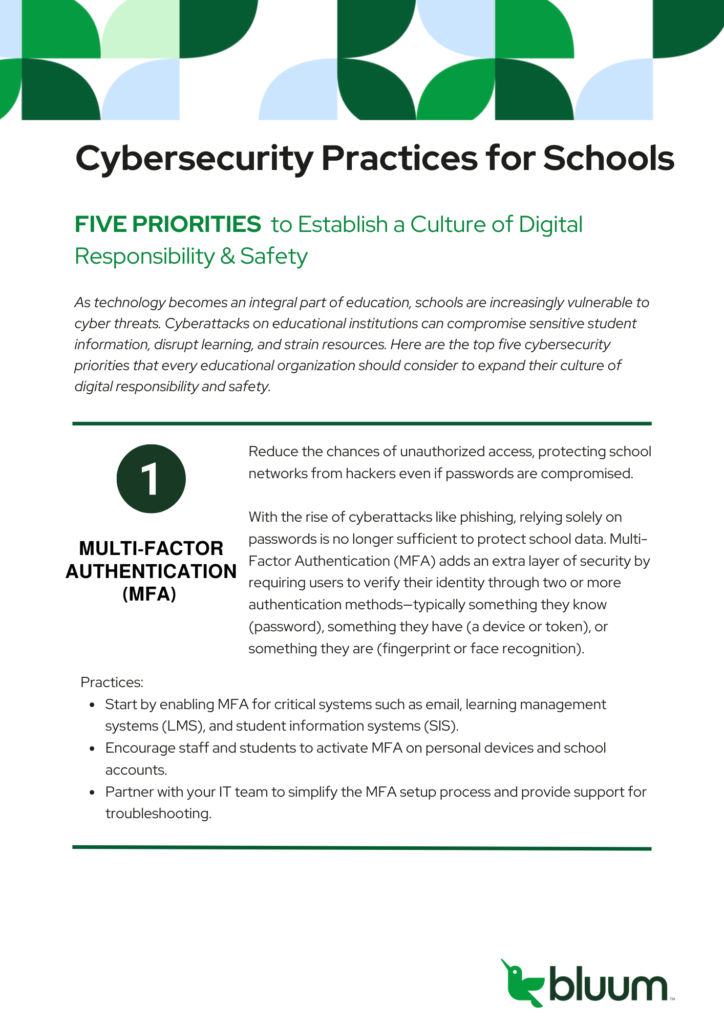Cybersecurity for Educators
Cybersecurity for Educators: In the digital age, educators are increasingly responsible for protecting sensitive student and staff data. The Cybersecurity is no longer solely the domain of IT professionals. It is a shared responsibility that extends to every educator. This article explores the latest cybersecurity challenges and best practices for educators. Providing practical examples and strategies to enhance digital safety in educational settings.

Understanding the Cyber Threat Landscape in Education
Educational institutions are prime targets for cyberattacks due to the vast amounts of personal and academic data they handle. Recent incidents highlight the vulnerabilities within the sector:
- PowerSchool Data Breach (2025): A significant breach exposed sensitive information of students and staff across the U.S. and Canada. Compromised credentials led to unauthorized access to personal data, including Social Security numbers and medical records.
- Ransomware Attacks on Schools: Many school districts have faced ransomware attacks, leading to operational disruptions and data loss. These incidents underscore the need for robust cybersecurity measures.
Core Cybersecurity Practices for Educators
To mitigate risks and enhance cybersecurity, educators should adopt the following practices:
- Implement Strong Password Policies: Encourage the use of complex passwords and change them regularly. Utilize password managers to securely store credentials.
- Enable Multi-Factor Authentication (MFA): MFA adds an extra layer of security by requiring additional verification steps. Reducing the likelihood of unauthorized access.
- Conduct Regular Cybersecurity Training: Educators should participate in ongoing training to recognize phishing attempts. Understand data protection laws, and stay informed about emerging threats.
- Secure Classroom Devices and Networks: Ensure that all devices connected to the school network are secured with firewalls, antivirus software, and up-to-date operating systems.
- Develop and Test Incident Response Plans: Establish clear protocols for responding to cyber incidents, including data breaches and system outages. Regularly test these plans to ensure effectiveness.

Integrating Cybersecurity into the Curriculum
Educators play a crucial role in fostering a culture of cybersecurity among students:
- Curriculum Development: Incorporate cybersecurity topics into lesson plans, covering areas such as online privacy, digital footprints, and safe internet practices.
- Interactive Learning: Utilize gamified learning tools and simulations to engage students in understanding cybersecurity concepts.
- Collaborative Projects: Encourage students to work on projects that promote digital safety. Such as creating awareness campaigns or developing secure applications.
Case Studies: Real-World Applications
- High School Cybersecurity Camp (2024): A five-day camp hosted by East Carolina University provided high school teachers with hands-on experience in cybersecurity. Participants learned about current threats and developed strategies to teach students about digital safety.
- Visual Cryptography Curriculum: A study designed a visual curriculum using the Scratch programming platform to teach K-12 students about cryptography and data protection. The approach proved effective in enhancing student understanding of cybersecurity principles.

Emerging Trends in Educational Cybersecurity
The landscape of cybersecurity in education is evolving:
- Artificial Intelligence (AI) and Machine Learning (ML): These technologies are being leveraged to detect anomalies and predict potential security breaches in real-time.
- Cloud Security: As schools increasingly adopt cloud-based platforms, securing these environments becomes paramount. Implementing strong access controls and data encryption are essential measures.
- Policy Development: Educational institutions are developing comprehensive cybersecurity policies that address data privacy, acceptable use, and incident response.
Conclusion
Cybersecurity is a shared responsibility that requires active participation from all educators. By implementing best practices, integrating cybersecurity into the curriculum, and staying informed about emerging threats. Educators can create a safe and secure digital learning environment.

Frequently Asked Questions (FAQs)
What is the role of educators in cybersecurity?
Educators are responsible for protecting sensitive data. Teaching students about digital safety, and fostering a culture of cybersecurity within the school community.
How can educators recognize phishing attempts?
Phishing emails often contain urgent requests, unfamiliar sender addresses, and suspicious links. Educators should be trained to identify these signs and report them appropriately.
Why is multi-factor authentication important?
MFA adds an extra layer of security by requiring additional verification steps. Making it more difficult for unauthorized individuals to access accounts.
What should be included in an incident response plan?
An incident response plan should outline procedures for identifying, containing, and recovering from cyber incidents. As well as communication strategies and roles.
How can cybersecurity be integrated into the curriculum?
Cybersecurity topics can be incorporated into lessons through discussions, projects, and interactive tools that engage students in understanding digital safety.
Final Words
By embracing these practices and staying proactive. Educators can significantly contribute to the cybersecurity posture of their institutions. Ensuring a safe and secure learning environment for all.
Free Here: Sister Fight APK
